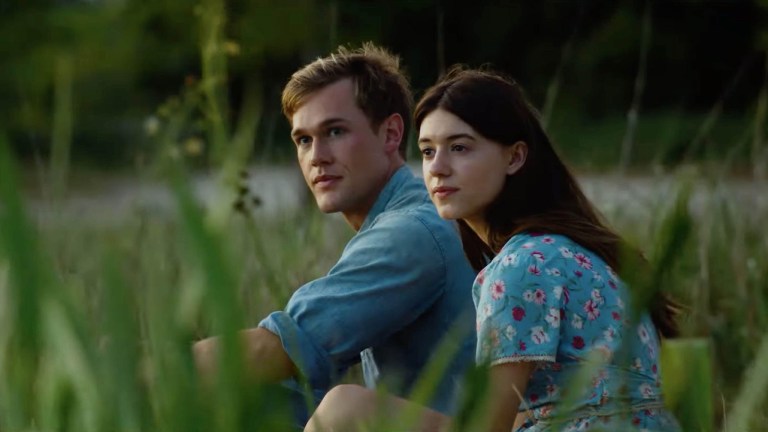The Real Murder Investigation Involving the Where the Crawdads Sing Author
Where the Crawdads Sings is a bestseller and now a major motion picture about intrigue and murder, but its author Delia Owens has her own dramatic history, including the fact she is still wanted for questioning in Zambia for the alleged crimes of others.

“Everybody has a secret,” teases the promotional poster for Sony’s new film adaptation of Where the Crawdads Sing. Daisy Edgar-Jones stars in the film as Kya, a young woman who as a child survived living alone in the unforgiving marshlands of North Carolina. Now an adult, she finds re-entry into human society complicated. Things complicate further when she’s accused of murder.
It’s an intriguing premise. But another intriguing secret the film studio really doesn’t want people talking about is the way Kya’s situation might mirror the troubling past of Crawdads’ author Delia Owens.
Several high-profile news articles and television shows that originally discussed Delia and her then-husband Mark Owens’ time in Zambia have resurfaced due to the heightened attention around the new film and the novel, which was published in 2018. The couple first came under international scrutiny in the wake of a 1996 episode of ABC’s news program Turning Point when a camera crew followed a team of park scouts employed by Mark Owens as they looked for elephant poachers in the area and ended up filming the murder of an alleged poacher. The circumstances surrounding the shooting have been conflicting but concerning enough that journalist Jeffrey Goldberg wrote a painstakingly researched 18,000 word feature story about it for The New Yorker in 2010. This article, a 2019 Twitter-trending Slate article, and Goldberg’s subsequent follow-up to his original piece published this week in The Atlantic, provide a compelling, if infuriating, examination of privilege, power, and obsession.
Delia Owens studied zoology and animal behavior at the University of Georgia before moving to the African nation Botswana in the late ‘70s, and co-authoring three popular memoirs with her husband Mark. Delia’s field research on lions and hyenas, as well as her conservation efforts, were well-regarded in the scientific community. However, the Owens’ public battle against the practices of the local cattle industry (Botswana’s main export is beef for Europe) angered the government, and the pair was forced to leave the country in 1984. They eventually settled near a remote national park in Zambia.
As recounted in Goldberg’s New Yorker article, and related in a 1990 Sports Illustrated feature on Mark Owens, the couple soon supplemented the park scouts’ salaries with new equipment like sleeping bags, boots, and guns to aid in the park’s anti-poaching efforts. The gifts to the locals and their sponsorship of several area businesses garnered the Owens’ new positions within park management, roles that put Mark in command of sixty Zambian scouts as a kind of anti-poaching army. The scientific study of elephants took a backseat to their fight against poachers.
In time, the Owens’ were nearly as popular as animal advocates like Gorillas in the Mist author Dian Fossey and Jane Goodall. However, ABC’s Turning Point news program aired “Deadly Game: The Mark and Delia Owens Story,” which revealed a darker side to the couple’s noble mission. Mark in particular admitted to using his private plane, weapons, and access to international donors to act outside of the law in his pursuit of preserving wildlife.
Mark also openly discussed the bounty hunting competitions he encouraged among his staff. He disputed claims that suspected poachers were often tied to trees, beaten, and left exposed to the sun. (In a letter to Goldberg from his lawyer, Owens maintains suspected poachers were only handcuffed to trees “for a few minutes and in the shade.”) Friends and professional colleagues also painted him and Delia as thinking little of Africans, comparing them to children in need of a guiding hand. (A claim that would later be leveled against Delia again with Crawdads’ depictions of Black men.)
But what the show’s producers caught on film was even more concerning: an alleged and unarmed poacher (or “trespasser,” as reporter Meredith Viera is careful to stress) was chased down by Mark’s son, Christopher, and several of his paid scouts. The camera keeps rolling as the unnamed man is repeatedly shot as he lies on the ground. Glossed over in the TV special, it nonetheless sparked an international controversy after the murder was broadcast on primetime.
Afterward, Mark and Delia Owens quietly left their home in Zambia and came to America. The Zambian government refutes Mark Owens’ assertions that the nation has an unwritten shoot-to-kill policy against trespassers and, besides, there was no body to provide evidence of a crime. But a body being possibly left to rot in a nature preserve teeming with predators and scavengers… well, that just conjures images of the circle of life, no?
While Delia Owens is not suspected of being directly involved in the filmed death of the unnamed man, she is still wanted for questioning by investigators in Zambia and, like the rest of her family, cannot return to Zambia to this day.
But the whispers about Delia Owens remained whispers until the 2010 New Yorker exposé. The meticulously researched feature detailed the questions surrounding Mark’s involvement in an alleged death and reexamined the feel-good self-promoted story of a wealthy, white, and naive couple having a grand adventure in Africa as self-appointed saviors of the local economy and its endangered species. It was a damning portrait of colonialist white savior tropes devolving into a Heart of Darkness tale of obsession, corruption, and racism.
Still, the article didn’t seem to keep Delia Owens from landing a lucrative publishing contract. Where the Crawdads Sing was published in 2018, and its vivid descriptions of the natural world, and the lived-in feel of a protagonist accused of a murder in the court of public opinion, got a celebrity endorsement from Reese Witherspoon, whose popular book club is rivaled only by Oprah’s. In a field that values its “30 Under 30” lists, Delia Owens stood out as a 70-year-old debut author.
Where the Crawdads Sing hasn’t won over everybody. Many critics point out the book’s ugly and paternalistic depictions of Black characters living in the Jim Crow-era South and Kya’s place among a long-standing media tradition that values the narrative of a preternaturally beautiful white woman overcoming social injustices faced much more commonly by people of color — to much less fanfare and without the promise of a happy ending.
In 2019, after it was announced that Witherspoon would executive produce the film adaptation, the questions around Delia Owens’ knowledge of her husband’s scouts, the author’s comments on Africans, and her racial stereotyping of Black Americans resurfaced. A follow-up to the New Yorker article was released in Slate with further allegations of racism and abuse of power.
Witherspoon herself is also coming under fire for using her wealth and privilege to uplift white stories again and again, seemingly unconcerned with Delia’s past in favor of a publicity machine that has helped Where the Crawdads Sing sell over 12 million copies worldwide and sit atop The New York Times bestseller list for over 160 weeks.
Witherspoon’s public persona as a kind of Girl Boss icon will no doubt help director Olivia Newman’s film, not to mention an exclusive Taylor Swift song on the soundtrack. But Sony has arguably appeared hesitant to put Witherspoon, Newman, and star Edgar-Jones in front of too many journalists, lest they be forced to answer uncomfortable questions about the controversy surrounding Where the Crawdads Sing.
Whether Where the Crawdads Sing will be a big summer event film remains to be seen (critical reviews are mixed), but a media narrative that glosses over the author’s history cannot stop the broader conversation around artists’ personal experiences informing their works, nor around the kinds of stories that are celebrated in pop culture and the stories that are silenced.
